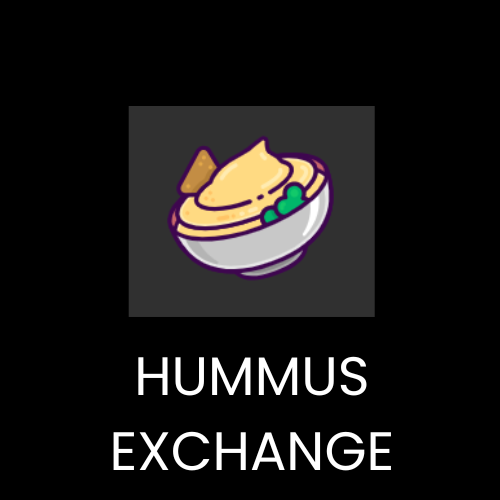In the realm of decentralized finance (DeFi), novel protocols continually emerge to tackle existing limitations and introduce groundbreaking solutions. Among these, Hummus Exchange stands out as a next-generation decentralized exchange (DEX), meticulously crafted for stablecoin swaps on the Metis blockchain. This article offers an in-depth exploration of Hummus Exchange, shedding light on its distinctive features, tokenomics, vesting schedules, fee structures, and more.
Introduction to Hummus Exchange
At the forefront of innovation, Hummus Exchange prioritizes censorship resistance, security, self-custody, and maximal capital efficiency. Operating as a suite of smart contracts on the Metis blockchain, it delivers a seamless trading experience for stable cryptocurrencies like USDT, USDC, and DAI. The protocol introduces a pioneering approach to automated market making (AMM) with single-sided liquidity provision, mitigating impermanent loss risk for liquidity providers and ensuring minimal slippage for traders.
Tokenomics and Distribution
Central to the Hummus Exchange ecosystem is its native token, HUM, which plays a pivotal role in driving platform utility and governance. With a fixed supply of 300,000,000 HUM tokens, the distribution strategy is meticulously designed to cater to diverse stakeholders. The allocation encompasses liquidity incentives, treasury reserves, private sale allocations, initial decentralized offering (IDO) distributions, team rewards, exchange liquidity provisions, advisory allocations, and allocations to the Metis Foundation.
Vesting Schedules
In line with fostering sustainable growth and aligning incentives, Hummus Exchange implements robust vesting schedules for various token allocations. These schedules ensure a gradual release of tokens over time, thereby averting potential market disruptions arising from abrupt token dumps. Liquidity incentives, treasury reserves, private sale allocations, team rewards, exchange liquidity provisions, advisory allocations, and Metis Foundation allocations are subject to distinct vesting periods, fostering long-term stability and community trust.
Fees and Price Oracle
Hummus Exchange adopts a transparent fee structure aimed at sustaining the ecosystem and rewarding liquidity providers. With a nominal swap fee of 0.01% for stable swaps, users are duly informed of applicable fees, empowering them to make informed decisions. Moreover, the platform leverages a robust price oracle to monitor token exchange rates meticulously. In instances of significant price deviations, trading activities are promptly halted to safeguard user assets, underlining the platform’s unwavering commitment to security and reliability.
Token Utilities: HUM and veHUM
Within the Hummus ecosystem, two primary tokens take center stage: HUM and veHUM. HUM serves as the native utility token, facilitating transactions, governance participation, and liquidity mining activities. Conversely, veHUM is generated through HUM staking and offers additional perks, such as liquidity mining APR boosts. While veHUM remains non-transferable and non-tradable, it enhances liquidity provider incentives and fosters deeper engagement within the ecosystem.
How to Purchase HUM Tokens
For enthusiasts eager to acquire HUM tokens, the process is straightforward and user-friendly. They can start by creating a compatible wallet, such as Metamask, and acquiring BNB (Binance Coin) to cover transaction fees on the Metis network. Subsequently, users can add the HUM token to their wallet using the provided contract address, symbol, and decimals. Finally, they can seamlessly swap BNB for HUM tokens on the Hummus Exchange platform, ensuring a secure and hassle-free transaction experience.
Conclusion: Spearheading DeFi Innovation
In summary, Hummus Exchange emerges as a beacon of innovation in the ever-evolving landscape of decentralized finance. With its avant-garde AMM design, single-sided liquidity provision model, transparent fee structure, and robust security protocols, Hummus Exchange redefines the paradigm of stablecoin swaps on the Metis blockchain. As the DeFi ecosystem continues to evolve, platforms like Hummus Exchange play a pivotal role in driving innovation, fostering inclusivity, and revolutionizing the future of finance.
In a rapidly transforming digital economy, embracing decentralized finance is not merely an option but a necessity. With Hummus Exchange leading the charge, the horizon of DeFi appears more promising than ever before.
Princy Agarwal, a postgraduate in English from Delhi University, writes content for Tricky Finance, where they simplify complex financial topics for readers. With a knack for clear communication, Princy’s work helps make finance understandable and accessible to all.




